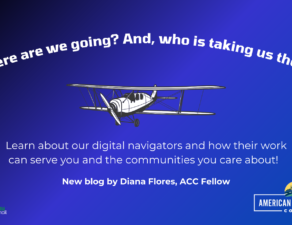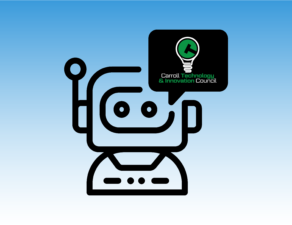
Let’s talk about money – specifically the money made available to organizations and partnerships involved in digital equity.
The Competitive Grant program is a community’s pathway to securing Digital Equity Act funds.
How did we get here? In November 2021, under the bipartisan infrastructure law, Congress created the Digital Equity Act of 2021, allocating $560 million to states and territories to develop comprehensive state digital equity plans. This initiative aimed to bridge the digital divide, ensuring equitable access to digital tools and resources for all communities.
By allocating these funds, the Digital Equity Act set the stage for every state and territory to create a tailored digital equity plan. These plans serve as blueprints for addressing the unique digital needs of each region, ensuring that no community is left behind in the digital age.
In March, the initiative took a significant step forward with the launch of the State Capacity Program. This program allows states and territories to apply for additional funding to implement their digital equity plans. By providing these resources, the State Capacity Program empowers regions to take actionable steps towards achieving their digital equity goals.
Now, we have arrived at the next phase: the Competitive Grant Program. This program is a game-changer as it opens the door for not only state agencies but also nonprofits and community anchor institutions to apply directly to the National Telecommunications and Information Administration (NTIA) for funding. This inclusivity ensures that a broader range of organizations can contribute to the mission of digital equity, leveraging their unique strengths and insights to address the digital divide.
The programs outlined in the Digital Equity Act focus on promoting large-scale social and economic change by centering on digital equity, digital inclusion, and digital literacy among covered populations. Digital inclusion activities include reliable broadband service, internet-enabled devices, applications and online resources designed to encourage self-sufficiency, participation, and collaboration, digital literacy training access, quality technical support, and awareness of online privacy and cyber security measures.
The program aims to expand access to quality education, healthcare, and internet technology, as well as promote social and civic engagement and foster economic stability, including workforce deployment and employment opportunities.
NTIA is seeking applications that address gaps in the implementation of state digital equity plans, will supplement or further advance state digital equity plans, and/or proposals that address barriers that were not identified in the current state digital equity plans. NTIA encourages proposals that demonstrate a broad partnership of entities with the ability to administer significant resources and address the varied concerns of covered populations. Communities are encouraged to look at these plans, identify gaps, and develop partnerships that can effectively administer resources and address the diverse concerns of the covered populations. Proposals should center the voices of those in covered populations, co-creating solutions that meet their needs through innovative approaches that transcend current programs.
Grant funds should be used to support digital inclusion activities, adopt broadband, upgrade public access centers, implement training programs, and make equipment available to those in need. Grants must have at least 10% matching funds, which can be cash or in-kind contributions. Additionally, there is a 10% cap on evaluation costs and a 10% cap on administrative costs.
Eligible entities include political subdivisions, agencies, instrumentalities; non-profit organizations, community anchor institutions, local education agencies, entities that carry out workforce development programs, or a partnership of any of these.
The NTIA encourages organizations to apply in partnerships. One eligible entity must be designated as the applicant for the partnership and serve as the Authorized Organizational Representative (AOR). The AOR must submit a binding letter of commitment from each member of the partnership and must have signatory authority on behalf of the organization they work for and all organizations in the partnership.
The application portal for these grants will open on August 14, 2024. In the meantime, review Maryland’s statewide Digital Equity Plan and identify where we can support supplement the work outlined.
Who Are the Covered Populations?
Covered individuals under the Digital Equity Act include those who are most in need of support to access digital resources. These groups include:
– Individuals living in households with an income of not more than 150% of the poverty level.
– Individuals aged 60 and over.
– Incarcerated individuals.
– Veterans.
– Individuals with disabilities.
– Individuals with a language barrier.
– Individuals who are part of a racial or ethnic minority.
– Individuals who primarily reside in a rural area





